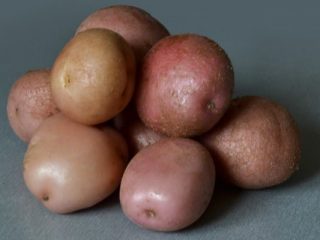To consistently get a good potato harvest, it is important to carefully select the variety. Some varieties produce high yields only with a high level of agricultural technology, which requires a lot of attention. If for some reason it is impossible to provide it, it is advisable to choose an unpretentious variety. These varieties are also suitable for beginners.
Description
The successful combination of unpretentiousness, productivity and excellent taste has made the Nevsky potato variety very popular. It is grown with pleasure by both summer residents and large producers.
The main advantages of this variety:
- Unpretentiousness;
- High yield;
- Excellent presentation;
- Undemanding to soil;
- Precocity;
- Universal use of tubers;
- Resistance to potato diseases.
Potatoes retain their shape when cooked, so they are successfully used for making soups, salads, and sauces.
Characteristic
Mid-early variety.
Potato tubers of the Nevsky variety are round, elongated, weighing up to 200 grams. The peel is smooth, yellowish, with pinkish eyes. Contains an average amount of starch, up to 15%. The pulp is white, with a creamy tint, the cut does not darken for a long time.
The bushes are low, densely leafy, and recover very quickly after damage. Productivity is high, each bush produces up to 15 tubers.
Potatoes "Nevsky" are resistant to drought and short-term waterlogging.It is highly resistant to late blight, scab, blackleg and other fungal diseases.
Landing
To plant Nevsky potatoes, it is advisable to choose a sunny, dry area, free from perennial plants. weed. Any soil will do, but potatoes growing in organic-rich, sandy soil will produce a richer harvest.
Potatoes of the “Nevsky” variety have a powerful root system, so one bush will need an area of at least 45 cm in diameter; this must be taken into account when determining the distance between planting holes.
Planting begins when the soil warms up to 14 - 17 degrees; potatoes of the Nevsky variety react poorly to cold soil. Planted in poorly warmed soil, the tuber is easily attacked by fungus, and the yield is significantly reduced.
To get an early harvest, Nevsky potatoes can be pre-sprouted. To do this, a month before planting, the tubers are placed in a warm, bright room. The tuber, ready for planting, has sprouts up to 3 cm in size.
The following planting methods are suitable for potatoes of the Nevsky variety:
- In the trenches;
- Into the ridges;
- Square-nested;
- Under film or agrofibre.
When planting, fertilizers are applied - rotted manure, humus, ash, bone meal. The use of ash and other potash fertilizers significantly improves the taste of potatoes.
Care
Caring for potatoes of the Nevsky variety consists of weeding, watering, treating against pests and feeding with nutrients if necessary.
Potatoes of this variety easily tolerate drought and heavy rains, but this variety reacts to prolonged exposure to low temperatures with a decrease in yield.
Under the sun's rays it very quickly turns green and becomes unsuitable for food. Mulching can solve this problem.
Potatoes should be watered only when necessary; they do not like to be waterlogged. In the absence of precipitation, watering is carried out no more than once a week, generously flooding the bushes.
Potato tubers are damaged by many insects; you can protect potatoes from most pests by treating the tubers with a long-acting product before planting. During the growing season, the soil is treated twice against mole crickets.
In addition, ash has a positive effect on the taste of potatoes. Do not use ash obtained after burning polyethylene, latex and plastic.
If Nevsky potato bushes are stunted, they may be lacking nutrients. Fertilizers can be applied at the root during watering or the leaves can be sprayed with special products. Spraying is carried out in calm weather, in the evening or early morning.
Reproduction
To save on purchasing planting material, you can prepare your own seeds. During potato growth, the bushes that bloomed first are noted. When the tops dry, dig up the potatoes and carefully clean them from the soil, being careful not to damage the skin. The tubers are carefully inspected and damaged ones are discarded.For planting, tubers no smaller than a chicken egg are selected.
Selected tubers are placed in boxes in one layer to dry. After a few days, you need to take the potatoes out into the sun for solanine production to begin. After this, the boxes with potatoes are put away for storage.
Seed potatoes "Nevsky" can be obtained at home. To do this, it is not the tubers that are sprouted, but the seeds. In the first year after planting, up to 12 small tubers grow on the bush. They are stored separately from potatoes intended for food to avoid possible infection by fungi and harmful insects.
Potassium fertilizers do not form compounds harmful to humans, and the use of such products is safe.
Planting material obtained in this way is free from fungi and pests, and potato yields are higher.
Storage
Whole, healthy, well-dried tubers are selected for winter storage. The temperature of the room where Nevsky potatoes will be stored should be about 4 - 6 degrees.
Nevsky potatoes keep well until mid-February, after which they begin to germinate quickly. To prolong storage, it is necessary to break off the sprouts in time.
In order not to be disappointed in growing potatoes, it is important to take into account the characteristics of the variety and choose the right methods of planting and care.
Reviews













